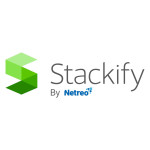In the ever-evolving world of software development and operations, it's crucial to have a clear understanding of various concepts and tools to ensure the smooth operation and performance of your applications. In this blog post, we'll dive into four essential topics: SLA vs. SLO, OpenTelemetry Metrics, APM vs. Distributed Tracing, and the Observability Stack. We'll explore their definitions, differences, and how they can help you achieve better insights into your application's behavior and performance.
-
SLA vs. SLO: Ensuring Reliability Service Level Agreements (SLAs) and Service Level Objectives (SLOs) are terms that are often used interchangeably but have distinct meanings.
-
SLA: SLA is a formal agreement between a service provider and a customer that outlines the expected service quality, including uptime, response times, and other performance metrics. It provides a contractual commitment for service reliability.
-
SLO: SLO is a subset of SLA, specifying the target performance level that the service provider aims to achieve. It defines the acceptable error margin and helps in setting expectations for service reliability.
-
OpenTelemetry Metrics: Capturing Performance Data OpenTelemetry is an open-source project that provides a unified set of APIs and libraries for capturing distributed traces and metrics. OpenTelemetry Metrics are a vital component for measuring the performance of your applications.
-
Metrics: Metrics are quantifiable data points that help you monitor various aspects of your application, such as response times, error rates, and resource utilization. OpenTelemetry Metrics allow you to collect and visualize this data to gain insights into your application's health and performance.
-
APM vs. Distributed Tracing: Monitoring Application Performance Application Performance Monitoring (APM) and Distributed Tracing are two crucial approaches for monitoring and troubleshooting application performance.
-
APM: APM tools provide end-to-end visibility into your application by monitoring various components, including code execution, database queries, and external service calls. APM helps identify performance bottlenecks and pinpoint the root causes of issues.
-
Distributed Tracing: Distributed tracing focuses on tracking the flow of requests as they traverse through various microservices and components of a distributed system. It offers insights into the path of a request, making it easier to diagnose latency issues and dependencies.
-
Observability Stack: A Comprehensive Solution Observability is the ability to understand how a system behaves based on its external outputs. An Observability Stack encompasses various tools and practices to achieve a holistic view of your system's performance.
-
Components of an Observability Stack: A typical observability stack includes metrics, logs, traces, and events. Metrics provide quantitative data, logs offer context-rich textual information, traces show the flow of requests, and events capture significant occurrences.
-
Benefits of Observability: By combining these components, you can gain deep insights into your application's behavior, making it easier to troubleshoot issues, optimize performance, and proactively address potential problems.
Conclusion:
In the complex world of software development and operations, understanding concepts like SLA vs. SLO, OpenTelemetry Metrics, APM vs. Distributed Tracing, and the Observability Stack is crucial for maintaining reliable and high-performing applications. These tools and practices empower you to set clear performance expectations, collect valuable data, and gain a comprehensive view of your system's behavior. By mastering these concepts, you can take control of your application's performance and ensure a seamless user experience.



You must be logged in to post a comment.